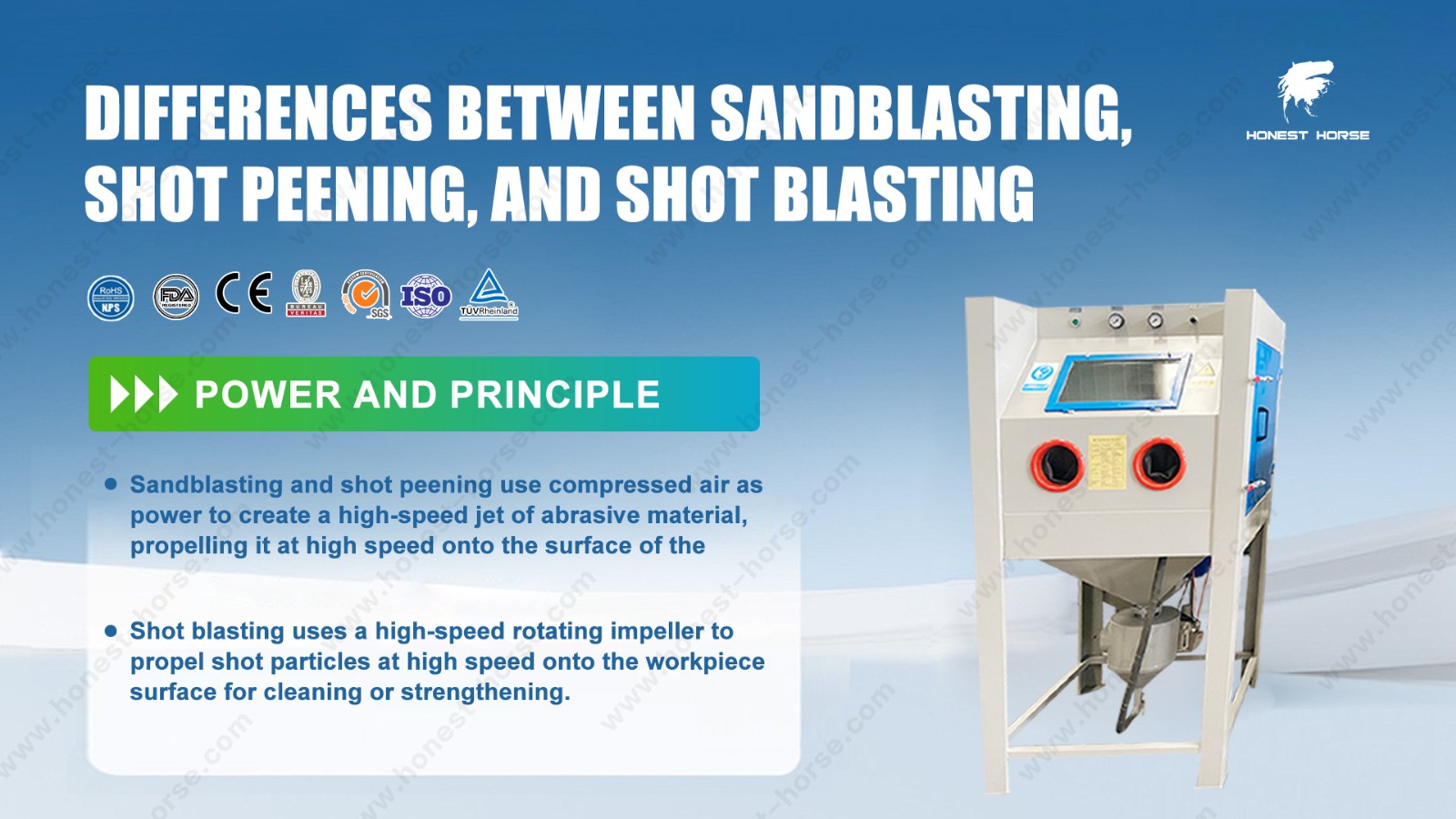Differences between Sandblasting, Shot Peening, and Shot Blasting
Similarly, shot peening uses compressed air to propel shot particles onto the workpiece surface for cleaning or strengthening.
Shot blasting uses a high-speed rotating impeller to propel shot particles at high speed onto the workpiece surface for cleaning or strengthening.

2. Media Used: Sandblasting uses angular abrasive particles, such as garnet sand , brown corundum, white corundum, and steel shot.
Shot peening uses round, smooth particles, and can use either metallic or non-metallic shot to meet different surface cleaning requirements. Common types include steel shot, cast iron shot, glass shot, and ceramic shot.
Shot blasting uses materials such as steel shot, cut wire shot, stainless steel shot, aluminum shot, glass beads, and ceramic shot.
3. Post-treatment effects: Sandblasting uses irregular abrasive particles to impact the workpiece surface, cleaning and increasing its roughness.
It removes rust and oxide scale, such as from heat-treated parts, giving metal workpieces better mechanical properties and making coatings more durable.
Shot peening relies on the strong impact force of the shot to make the workpiece surface denser, thus making the workpiece more wear-resistant, tough, and corrosion-resistant.
Shot blasting has more functions and effects: it not only removes rust and surface oxide scale, but also improves surface roughness, removes machining burrs, eliminates internal stress, reduces deformation after heat treatment, and improves surface wear resistance and compressive strength.
Sandblasting has lower equipment requirements and the abrasive particle speed is not fast, but the processing speed of the workpiece is much faster. Shot blasting requires more advanced equipment, therefore, the processing speed is slower and usually more expensive.
Although shot peening and shot blasting differ in their blasting power and methods, both aim to impact the workpiece at high speed, and their effects are essentially the same. Shot peening is more precise and easier to control, but its efficiency is lower than shot blasting, making it suitable for small workpieces with complex shapes. Shot blasting is more economical and practical, easier to control efficiency and cost, and allows for control of the shot count to adjust the blasting effect, but it can have blind spots, making it suitable for batch processing of large, flat, single workpieces.

4. Applications: Sandblasting is mainly used for rust and paint removal. While shot peening and shot blasting remove rust, the workpiece surface is essentially hammered by countless small hammers, thus strengthening and upgrading it.
Shot peening and sandblasting are powered by compressed air, while shot blasting is powered by an impeller, resulting in greater force.
The sand and shot used in sandblasting, shot blasting, and shot peening are all recyclable.
Shot peening, sandblasting, and shot blasting processes are used in almost all areas of machinery, such as shipbuilding and repair, automotive parts, aircraft components, gun and tank surfaces, bridges, steel structures, glass, steel plates and profiles, pipe internal and external corrosion protection, and even road surfaces, etc.
2005-2022 © All Rights Reserved.HONEST HORSE (CHINA) HOLDING LIMITED

 English
English Spanish
Spanish Arabic
Arabic